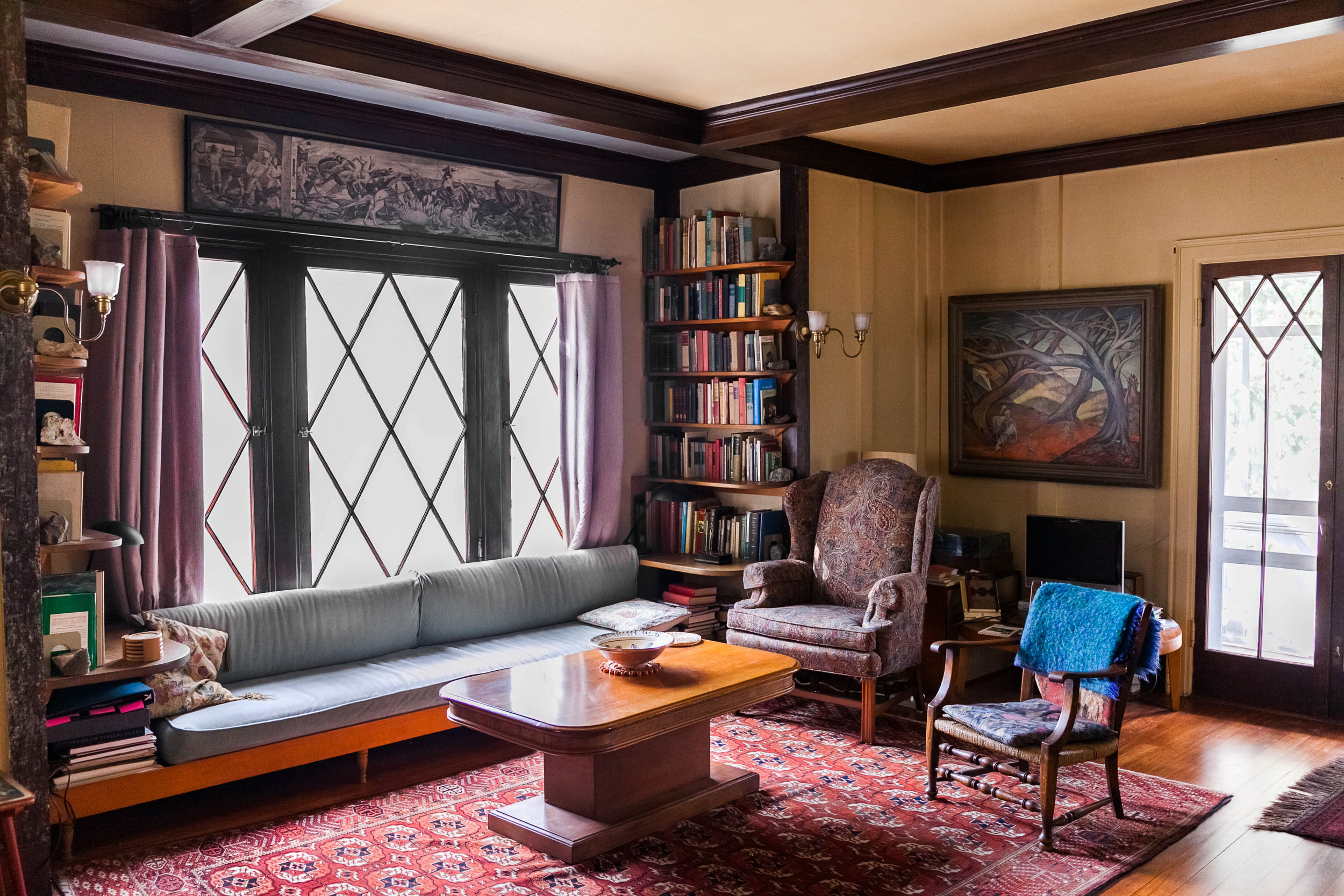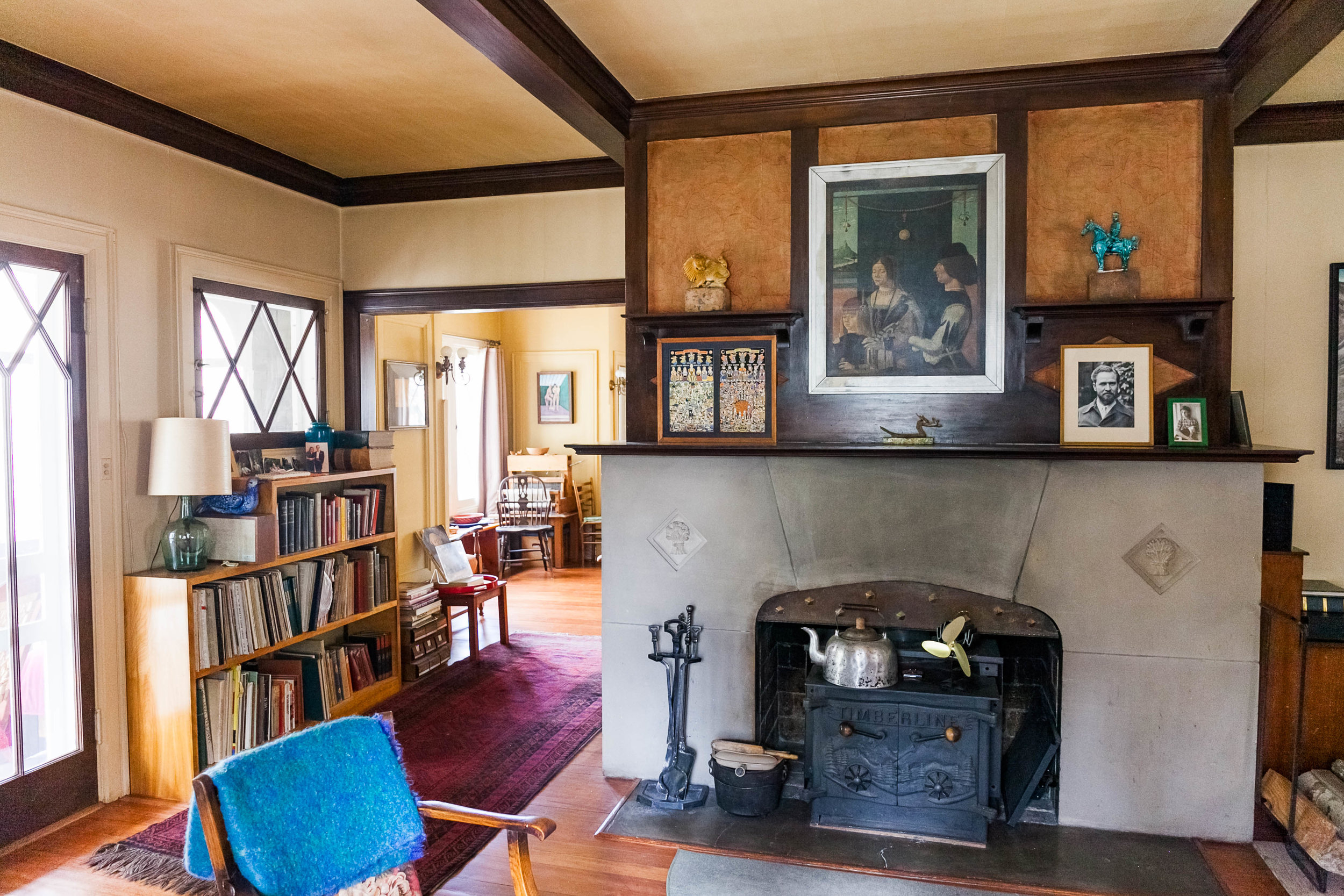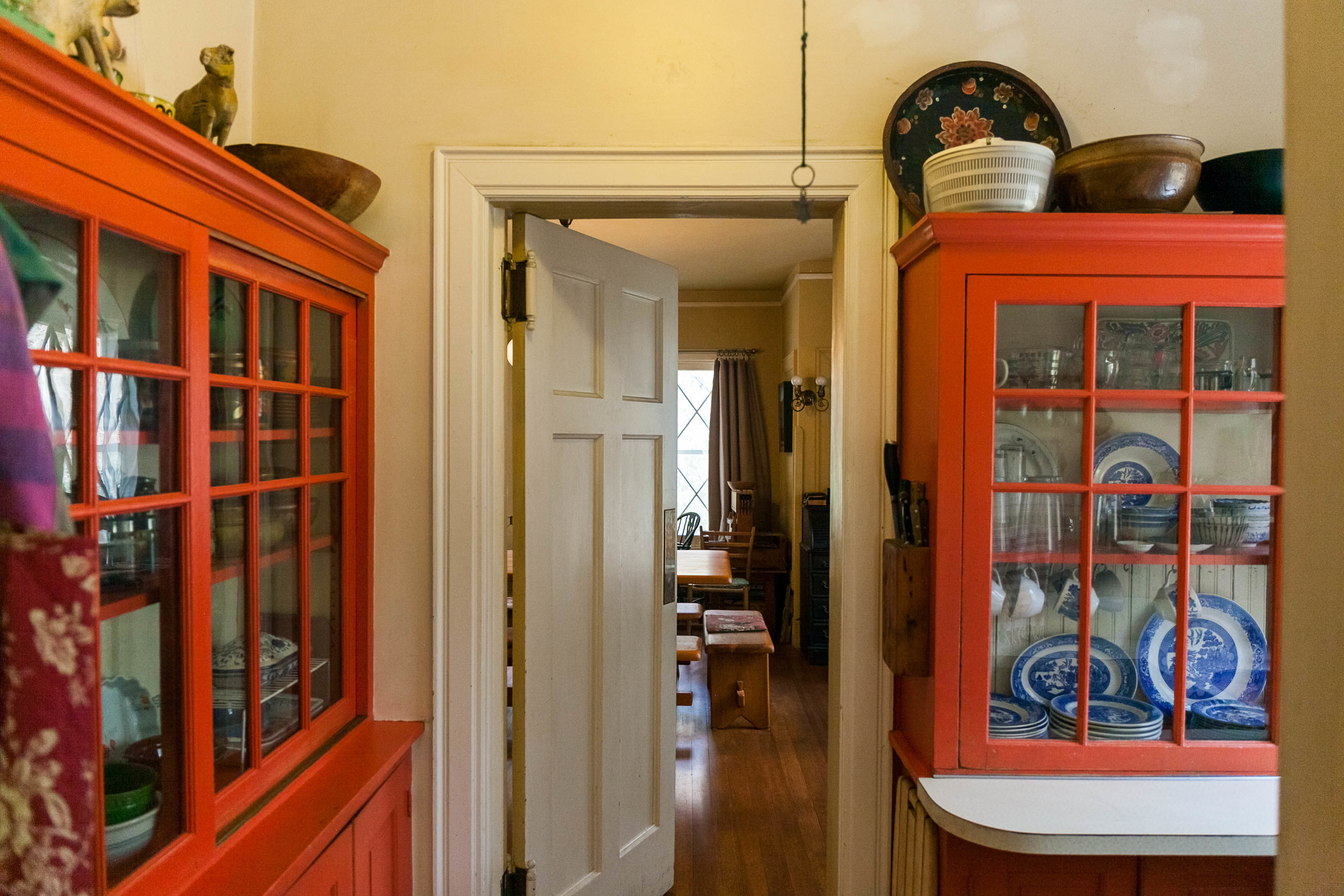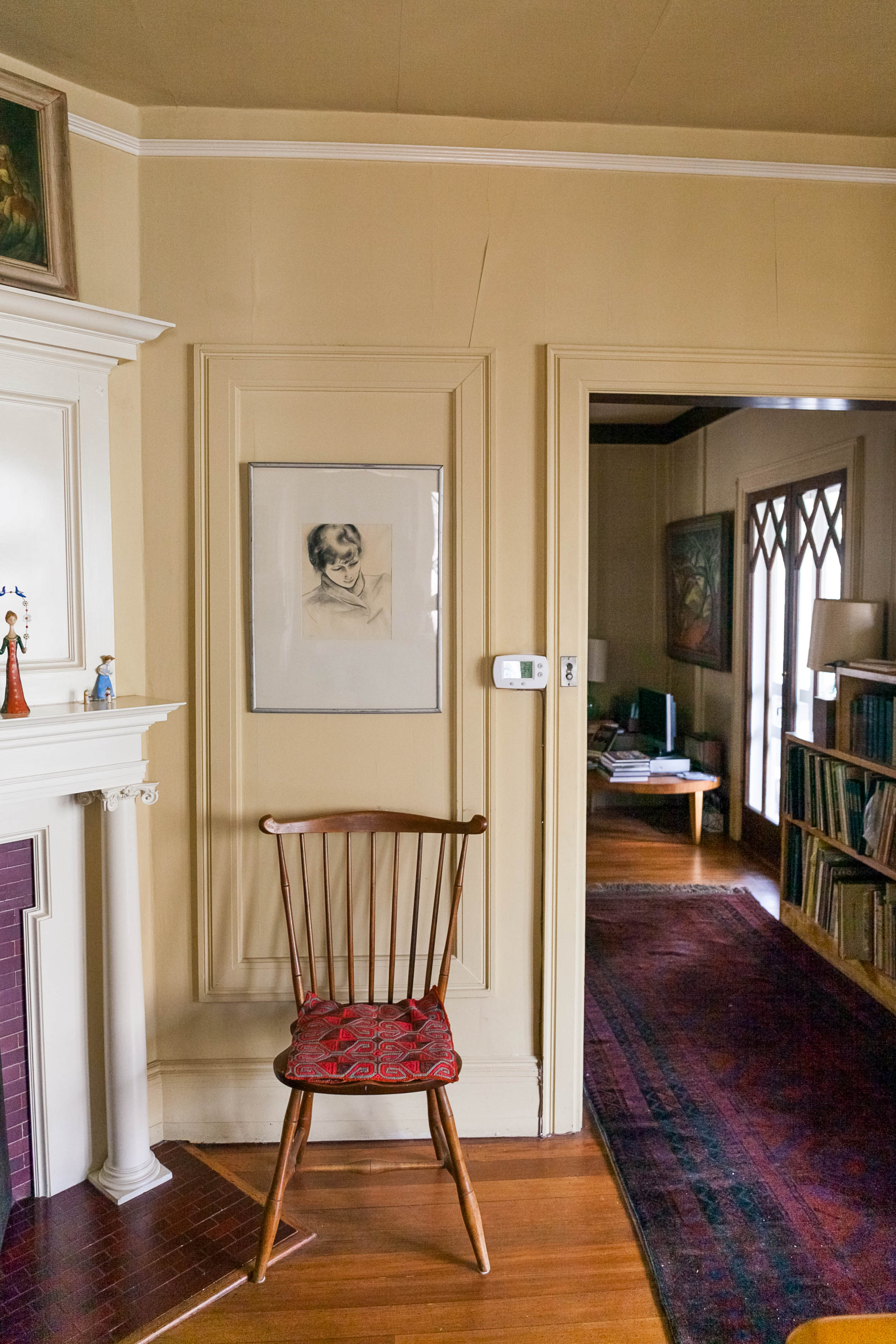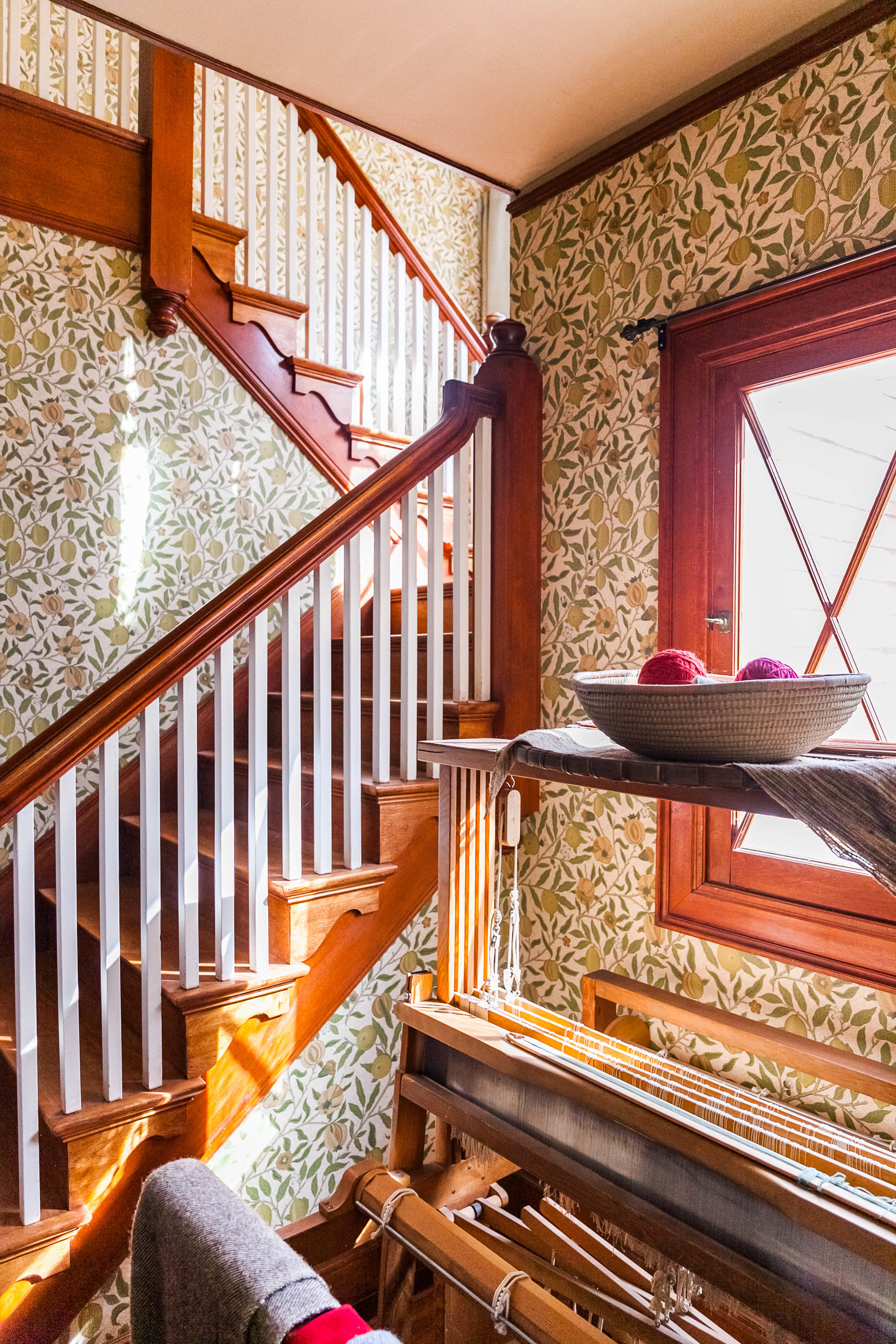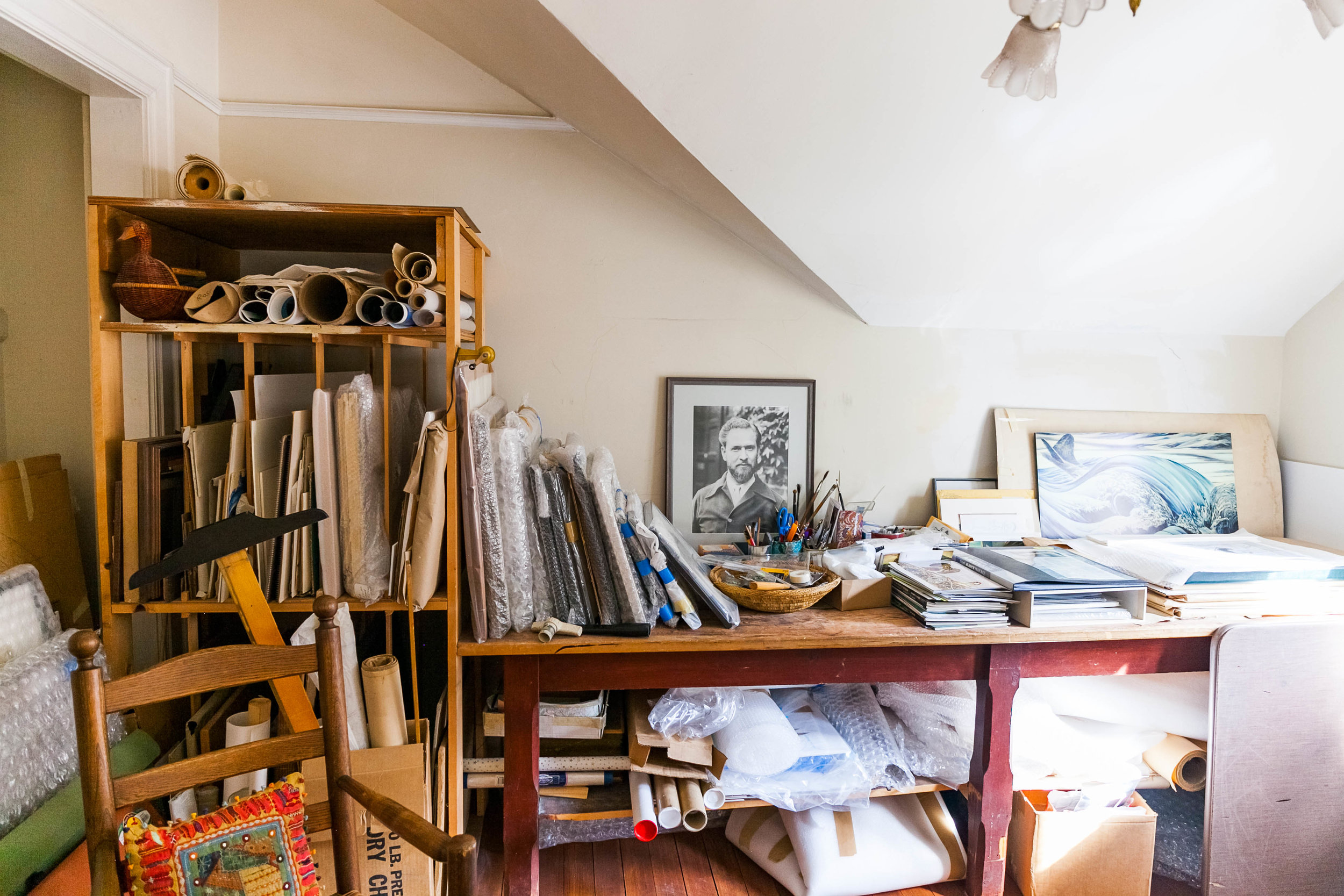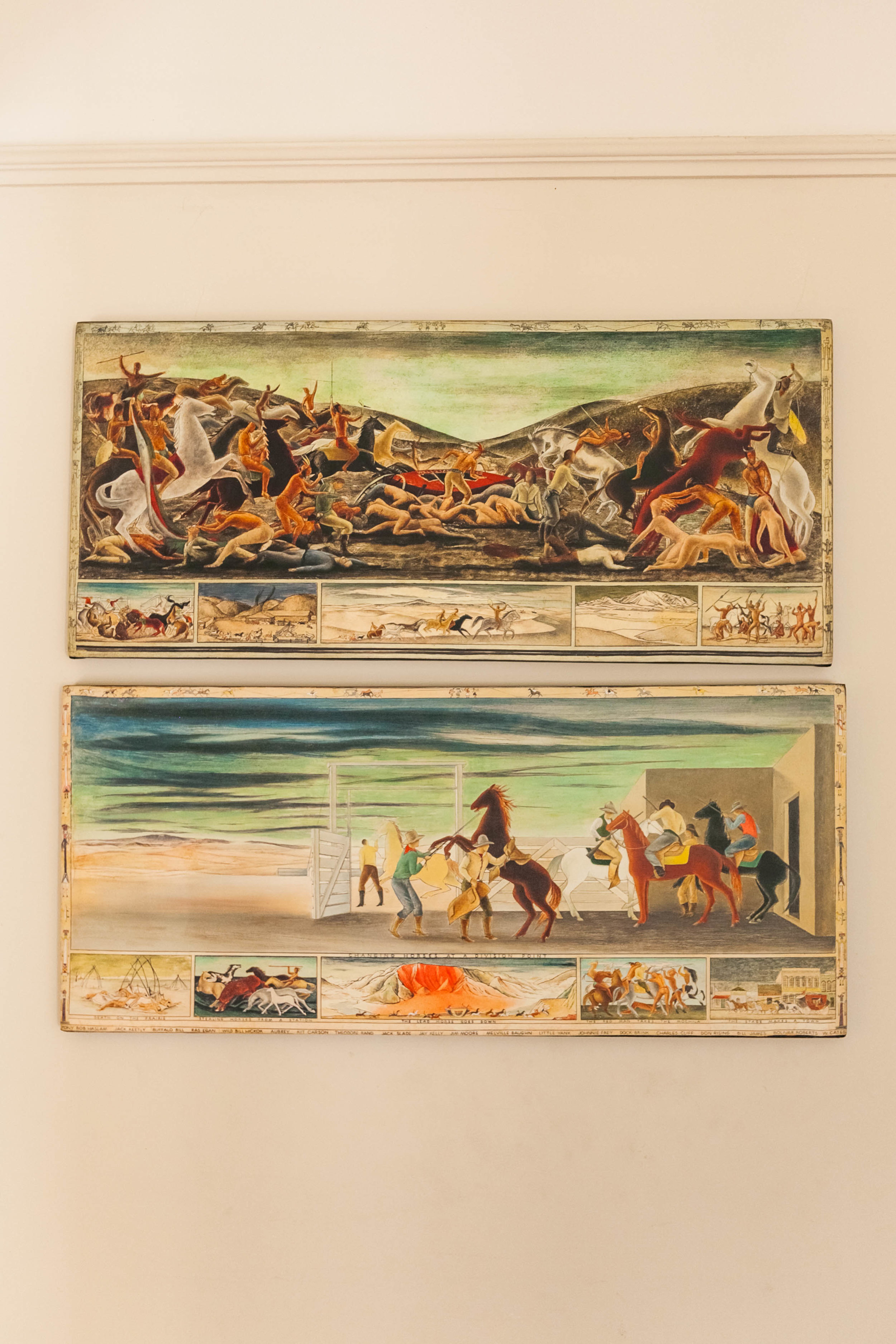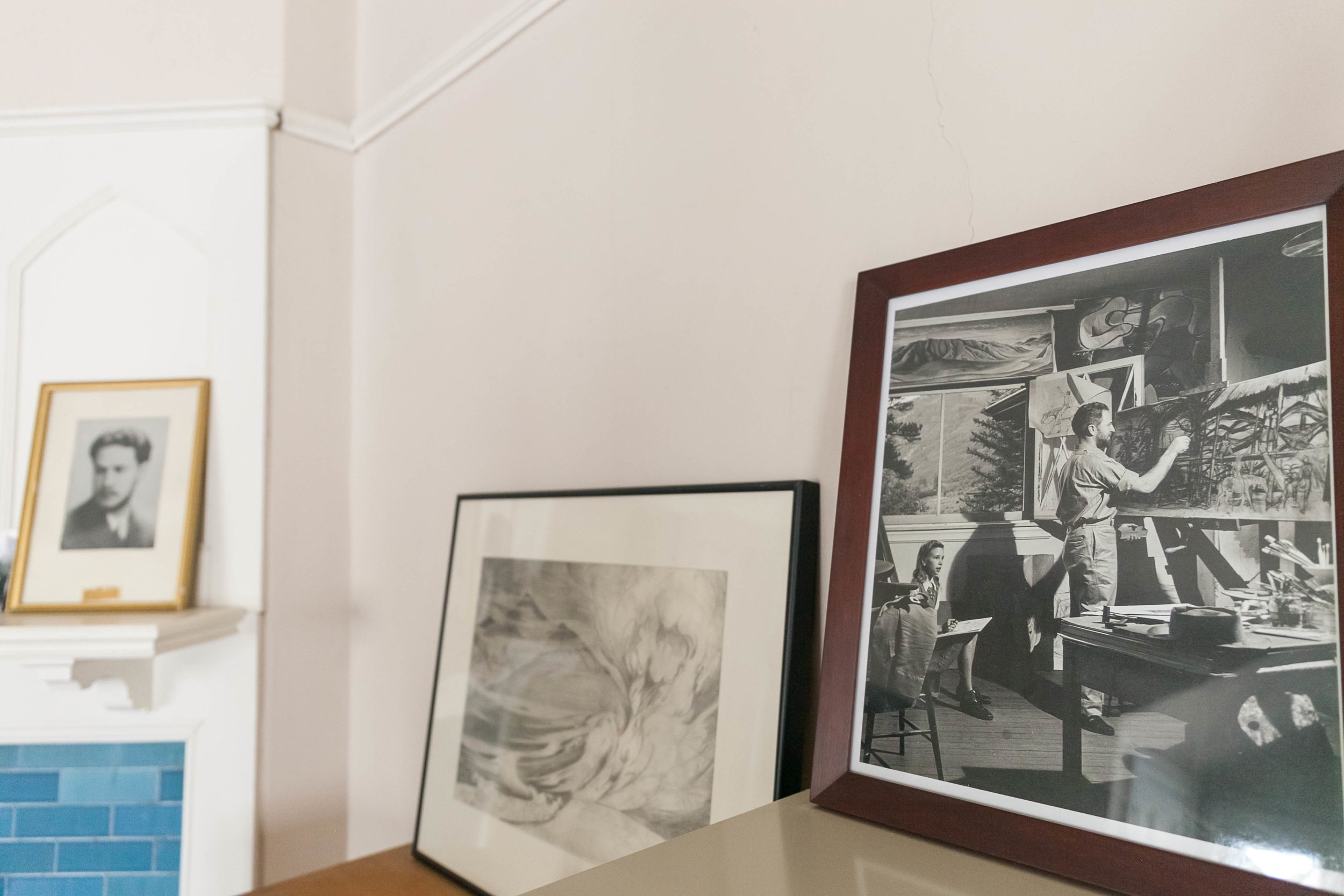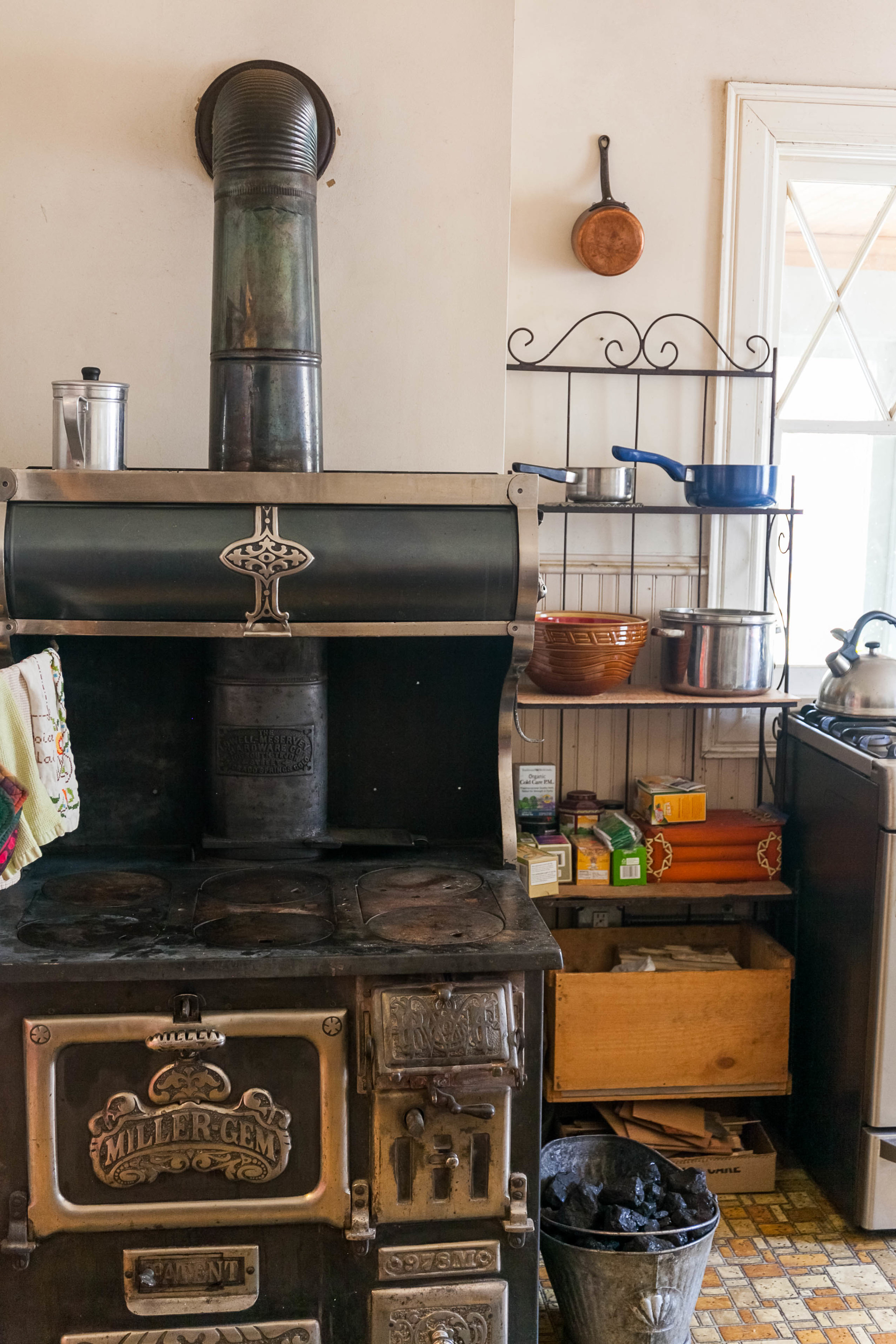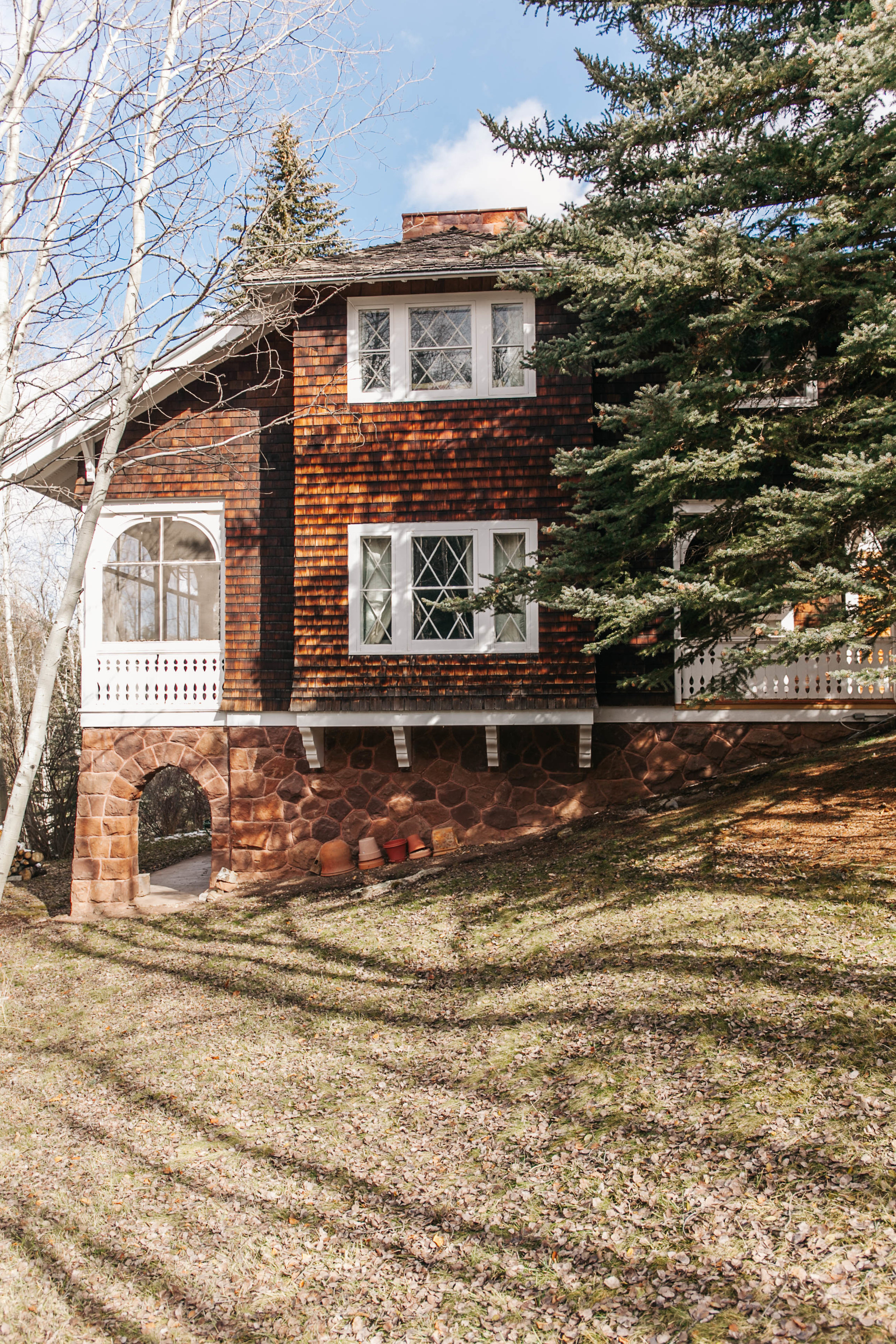An Historic Treasure in Redstone
Photos by Kaylan Robinson
The Crystal Farm House was legendary in my mind even before my first visit. The petite, elderly woman who welcomed me with open arms into her kitchen was also legendary. Paula Mechau, who became my mother-in-law, was the widow of acclaimed Colorado artist Frank Mechau. On one of my first dates with their son Dorik, he enthralled me with stories of his father’s all-too-brief art career and of Redstone, the place that has served as touchstone for the Mechau family for more than 80 years.
The small kitchen was toasty from the fire burning in the cast-iron stove that amply filled one corner of the room. Paula Mechau was just as feisty and charming as I’d been told. On a corner shelf stood an oversized postcard image of “Tom Kenney Comes Home,” one of Frank Mechau’s best-known paintings. Seeing it there, in context, in the Mechaus’ Redstone kitchen, brought Dorik’s stories home — to the remarkable place, house, artist, and family.
It all began one summer day in 1937 when Frank Mechau took Paula and visiting Paris friends to see the virtually abandoned village alongside the Crystal River. They were dumbstruck to find the Redstone Inn open and serving lunch. Inside, they were surprised to be greeted by Lucille McDonald, the widow of Redstone’s founder, John Cleveland Osgood.
Osgood, one of the wealthiest industrial capitalists of his time, created Redstone around 1900. He envisioned a model industrial community that would provide significant comforts and amenities for its workers. His goal was to eliminate threats of unrest, unionization, and potential strikes against Colorado Fuel and Iron (CF&I), the parent company in which he held a key position. Coal extracted at the nearby mining camp of Coalbasin was baked in the 249 coke ovens built at Redstone. The finished coke was used to fuel CF&I’s steel mills in Pueblo, Colorado.
Osgood’s social experiment at Redstone lasted only 10 years. He was squeezed out of CF&I when east coast partners took control of the company’s Colorado coal operations, leaving him the village of Redstone and some adjacent properties. When Osgood died in 1926, Lucille McDonald inherited all of Osgood’s Redstone holdings. She tried unsuccessfully to sell the property as a whole. When the Mechaus came for lunch, she was quick to tell them there were individual houses for sale.
Paula was smitten by Redstone and the Crystal River Valley. Frank, who grew up in Glenwood Springs, understood why. By the end of the summer, they had scraped together a down payment on the house McDonald had shown them — CF&I’s manager’s residence, near the Redstone Inn. In the spring of 1938, they moved in, joining Redstone’s few other residents —two caretakers and their families. Evidence of Osgood’s vision surrounded them — an elaborate clubhouse, a schoolhouse, the inn, a commissary, his Cleveholm mansion, and dozens of individually unique cottages for workers and their families.
In 1944, the Mechaus worked out a land-swap with Lucille McDonald. They traded the manager’s residence for Osgood’s Crystal Farm House, 2 miles upriver on a ranch that supplied the community of Redstone. No ordinary farmhouse, it was his temporary residence while Cleveholm, now called the Redstone Castle, was being built on a hillside overlooking the Crystal River. Boal and Harnois, the architects who designed Cleveholm and other Redstone buildings, also designed the Crystal Farm House. The Mechaus became its second owners.
In the wake of Frank Mechau’s devastating, untimely death in March 1946, the house became bedrock for Paula and the four Mechau children. Though they left Redstone periodically so Paula could work, they returned at every possibility. Paula lived most of the rest of her life there, welcoming visits from her children and grandchildren, and becoming a respected, well-loved teacher and vocal advocate for environmental protection of the Crystal River Valley.
The beautifully designed, historic Redstone home remains an icon for the extended Mechau family. Weekend visits and longer sojourns bring past and present together. A newer downstairs bathroom replaced a pantry, but the architects’ blueprints show how little else has changed. What is evident is more than seven decades of the Mechau family’s loving care. The house is in excellent condition. It remains part of John Osgood’s legacy, but it has also become a treasury of family memories, art, and stories left by the legacies of Frank and Paula Mechau.
More on Mechau To learn more about the artist and see examples of his work, visit frankmechau.com.

